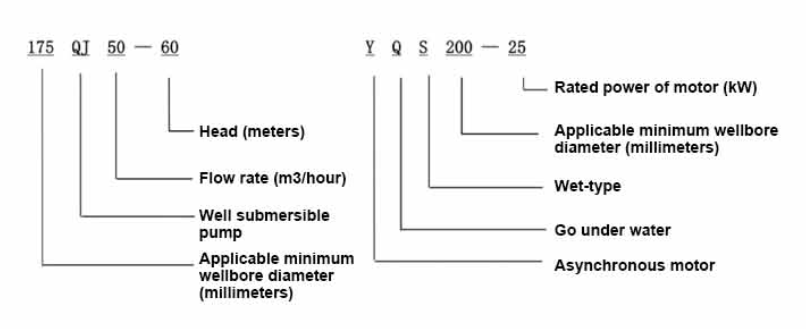Dec . 03, 2024 16:42 Back to list
Guide to Effectively Utilizing a Submersible Pump for Various Applications
How to Use a Submersible Pump A Comprehensive Guide
Submersible pumps are invaluable tools used in a variety of applications, from draining flooded basements to irrigating lawns and gardens. These pumps operate underwater and are designed to push water to the surface rather than pull it, making them particularly efficient for deep well applications and other submerged situations. In this article, we'll explore how to properly use a submersible pump, ensuring you maximize its efficiency and durability.
Understanding the Submersible Pump
Before delving into the usage, it’s essential to understand what a submersible pump is. Typically encased in a watertight housing, a submersible pump contains a motor that is sealed and submerged in the liquid it pumps. This design minimizes the risk of pump damage and prevents air binding, allowing for better performance in deep-water settings.
Step-by-Step Guide to Using a Submersible Pump
1. Select the Right Pump The first step is choosing the correct submersible pump for your needs. Evaluate the volume of water you need to move, the total dynamic head (TDH) which includes both the height the water needs to be lifted and the pressure at which it will be discharged, and the type of fluid being pumped. For example, for clear water, a standard submersible pump suffices, while for dirty water, you'll need a pump designed to handle solid particles.
2. Prepare the Site Before starting, ensure the site is safe. Clear away any debris surrounding the pump area, and identify the electrical power source. If working in a flooded area, be cautious and wear appropriate safety gear, such as rubber boots and gloves.
3. Set Up the Pump Position the pump in the water. If the water is murky or contains solids, it’s advisable to place the pump on a platform to avoid sucking in debris. If you are using the pump for a well, ensure the inlet is submerged adequately to prevent it from drawing air.
how to use submersible pump

4. Connect the Discharge Hose Attach a suitable discharge hose to the pump’s outlet. Make sure the connection is tight to prevent leaks, and route the hose to the desired discharge point. It’s important to note that the hose's diameter should match the pump’s outlet for optimal performance.
5. Connect to Power Source Carefully connect the pump to the power source. Ensure that all electrical connections are secure and follow any provided safety guidelines. If the pump is designed for submersion, it should have a specific rating for underwater use.
6. Turn On the Pump Switch on the pump and observe its operation. It should begin pumping immediately. Monitor the water flow and ensure that it is functioning as expected. If the pump runs dry or appears to be making strange noises, turn it off immediately to prevent damage.
7. Regular Maintenance Once you have finished using the pump, it's crucial to perform maintenance. Disconnect it from the power source and clean it thoroughly. Remove debris from the filter and inspect the power cord and connections for any signs of wear or damage.
8. Safety Precautions Always prioritize safety when using a submersible pump. Avoid operating the pump in hazardous conditions. If you must use it in potentially dangerous areas with electrical risks, utilize ground fault circuit interrupters (GFCI).
Conclusion
Using a submersible pump effectively involves careful preparation, proper setup, and attentive monitoring during operation. By following the steps outlined above, you can ensure that your submersible pump operates efficiently and safely, meeting your water-moving needs. Whether you are a homeowner dealing with flooding or a professional contractor, understanding how to use this powerful tool will enhance your capabilities and increase your project's success. Always refer to the manufacturer's manual for specific instructions related to your model, as they may contain essential information regarding safety and usage guidelines.
-
Submersible Water Pump: The Efficient 'Power Pioneer' of the Underwater World
NewsJul.01,2025
-
Submersible Pond Pump: The Hidden Guardian of Water Landscape Ecology
NewsJul.01,2025
-
Stainless Well Pump: A Reliable and Durable Pumping Main Force
NewsJul.01,2025
-
Stainless Steel Submersible Pump: An Efficient and Versatile Tool for Underwater Operations
NewsJul.01,2025
-
Deep Well Submersible Pump: An Efficient 'Sucker' of Groundwater Sources
NewsJul.01,2025
-
Deep Water Well Pump: An Efficient 'Sucker' of Groundwater Sources
NewsJul.01,2025
-
 Submersible Water Pump: The Efficient 'Power Pioneer' of the Underwater WorldIn the field of hydraulic equipment, the Submersible Water Pump has become the core equipment for underwater operations and water resource transportation due to its unique design and excellent performance.Detail
Submersible Water Pump: The Efficient 'Power Pioneer' of the Underwater WorldIn the field of hydraulic equipment, the Submersible Water Pump has become the core equipment for underwater operations and water resource transportation due to its unique design and excellent performance.Detail -
 Submersible Pond Pump: The Hidden Guardian of Water Landscape EcologyIn courtyard landscapes, ecological ponds, and even small-scale water conservancy projects, there is a silent yet indispensable equipment - the Submersible Pond Pump.Detail
Submersible Pond Pump: The Hidden Guardian of Water Landscape EcologyIn courtyard landscapes, ecological ponds, and even small-scale water conservancy projects, there is a silent yet indispensable equipment - the Submersible Pond Pump.Detail -
 Stainless Well Pump: A Reliable and Durable Pumping Main ForceIn the field of water resource transportation, Stainless Well Pump has become the core equipment for various pumping scenarios with its excellent performance and reliable quality.Detail
Stainless Well Pump: A Reliable and Durable Pumping Main ForceIn the field of water resource transportation, Stainless Well Pump has become the core equipment for various pumping scenarios with its excellent performance and reliable quality.Detail
